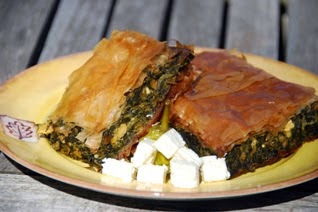Hello everyone in our blog!
Today we are going to prezentation you traditional dishes from hungary!
In Hungary, people usually have a large breakfast. Hungarian breakfast generally is an open sandwich with fresh bread or a toast, butter, cheese or different cream cheeses, tъrу cheese or kцrцzцtt (Liptauer cheese spread), cold cuts such as ham, vйres hurka (similar to black pudding), liver pвtй (called mбjkrйm or kenхmбjas), bacon, salami, beef tongue, mortadella, disznуsajt (head cheese), sausages such as kabanos, beerwurst or different Hungarian sausages or kolbбsz.Even eggs, (fried, scrambled or boiled), French toast called bundбskenyйr and vegetables (including peppers, bell peppers, tomatoes, radish, scallion and cucumber) are part of the Hungarian breakfast. Sometimes breakfast is a cup of milk, tea or coffee with pastries, a bun, a kifli or a strude with jam or honey, or cereal, such as muesli and perhaps fruit. Children can have rice pudding (tejberizs) or Semolina Cream (tejbegrнz) for breakfast topped with cocoa powder and sugar or with fruit syrup. Hot drinks are preferred for breakfast.
Villбsreggeli (literally breakfast with fork) is a more luxurious big breakfast given on special occasions or holidays. Often guests are invited. Deviled eggs, cold steak, cold salads, salmon-omelet, pancakes, a spicy cheese spread made with sheep milk cheese called kцrцzцtt, caviar, foie gras, fruit salads, compote, fruit yogurts, fruit juices, champagne and pastries, cakes and cookies may be served.
Lunch is the major meal of the day, usually with several courses. Cold or hot appetizers may be served sometimes (for example fish, egg or liver), then soup. Soup is followed by a main dish. The main dish is a dish including meat and salad, which precedes the dessert. Fruit may follow. In Hungary, pancakes are served as a main dish, not for breakfast. Salad is always served with meat dishes, made of lettuce with tomatoes, cucumbers and onions or a simple thin sliced cucumber salad in vinaigrette. Salads such as Salade Olivier or potato salad are made of boiled potatoes, vegetables, hard-boiled eggs, mushrooms, fried or boiled meat or fish, in vinaigrette, aspic or mayonnaise. These salads are eaten as appetizers or even as a main course.
Some people and children eat a light meal in the afternoon, called uzsonna, usually an open sandwich, pastry, slice of cake or fruit. Dinner is a far less significant meal than lunch. It may be similar to breakfast, usually an open sandwich, yogurt or virsli (hot dog sausage) with a bun, more seldom a cake, pancakes (palacsinta), and it consists of only one course.
boscolo sacher
Ingredients
375 g dark chocolate into small pieces or tablets
325 gr butter
100 gr icing sugar
a pinch of vanilla powder
15 eggs
450 g caster sugar
250 gr flour 00
75 g chestnut flour
puréed chestnuts q.b.
a pinch of salt
butter and flour for the mold
Ganache
250 ml cream
375 g dark chocolate tablets or pieces
Pour the cream into a saucepan and put it on the fire to warm.
Bring to a boil, then add the chocolate.
Mix thoroughly with a wooden spoon until the chocolate is melted and well blended complete with cream.
Procedure:
Pick up the dark chocolate in a bowl, then let it melt in a double boiler. Meanwhile, in a bowl, fitted with a whisk the butter with the sugar, salt and vanilla. When the mixture is well blended, add a little 'time to the lightly beaten egg yolks, stir and add the melted chocolate.
Separately, in a large bowl, whisk together the egg whites with a whisk to zuchcero and add them to the mixture gently, then add the flour. Mix well to obtain a homogeneous mixture. Pour into a mold greased and floured diameter of about 22-24 cm and place in a preheated oven at 170 ° C for 35-40 minutes.
Remove from the oven and let the cake cool, then remove it from the mold, gently inverting. Cut in half horizontally with a thin knife, a saw in order to obtain 2 disks.
Prepare now ganache. With a spatula stendetene a layer on the first disc and close the pie with the second disk. Spread the mashed brown over the entire surface of the cake, then cover the cake with the remaining ganache. Refrigerate for 20 minutes until the frosting you will not be solidified. Decorate with marron glacé.
Salami
Salami is cured sausage, fermented and air-dried meat, originating from one or a variety of animals. Historically, salami was popular among Southern European peasants because it can be stored at room temperature for periods of up to 30–40 days once cut, supplementing a possibly meager or inconsistent supply of fresh meat. Varieties of salami are traditionally made across Europe.











